Querying Data from any source
It requires basic SQL knowledge, because it’s built around the philosophy that any source data can be queried using SQL language.
The simplest example would be :
I have a SAMPLE.CSV file, I want to query all fields from that file and retrieve the first 10 rows.
The SQL code would be :
SELECT * FROM SAMPLE.CSV LIMIT 10;
That’s exactly what Fuzible is able to do : You type SQL queries, it simply translates them according to the data source you’re using.
Fuzible is able to work with Mailboxes, Active Directory, Rest API’s, Files and Databases !
Writing Data to any target
Querying data is one thing, but the goal is to send it somewhere else.
The simplest exemple would be :
I want to send that data into a MySQL database, I want it to be fully automatic, including table creation.
Using the query I wrote earlier, I just need to add the destination :
MYDATA:SELECT * FROM SAMPLE.CSV LIMIT 10;
Fuzible will determinate the most accurate data schema by analyzing the full dataset, and create the table accordingly. It can also add a primary key if he finds one !
1. SQL to File Query
The database syntax applies. It means that if you’re using a MySQL source database, you have to write some MySQL code.
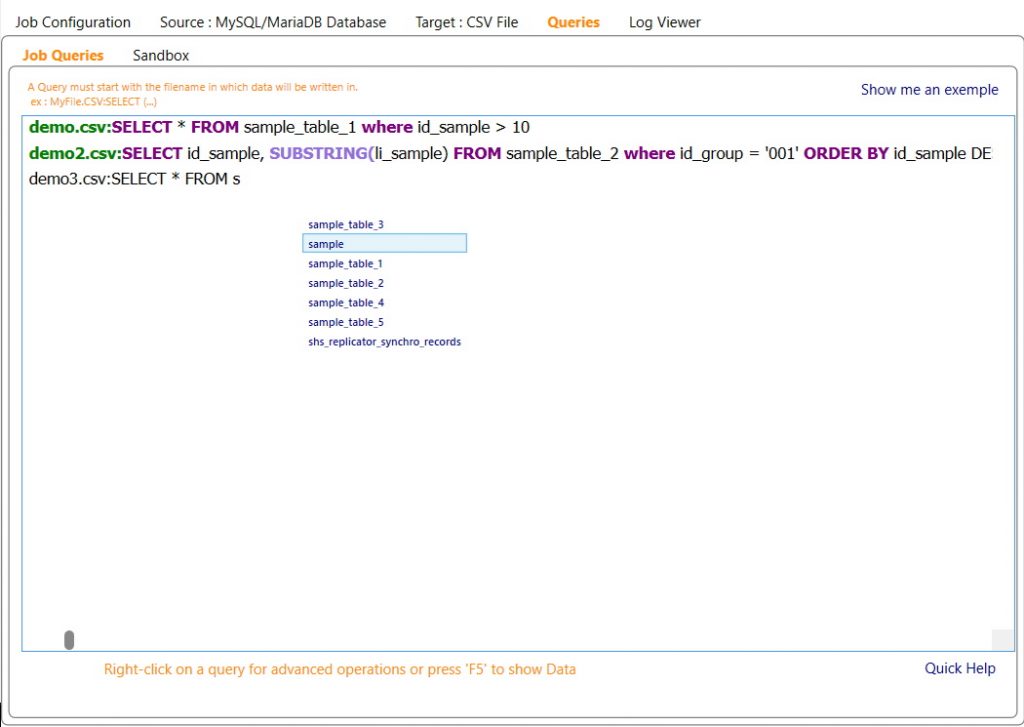
The Query Assistant (contextual menu) assists you while writing a query.
2. File to File Query
The generic Fuzible SQL (fully SQL-92 compatible) syntax applies.
You’re not dealing with SQL tables but file names. In the background, Fuzible is scanning all the available files to check their content, it automatically detects headers, and the query contextual menu is here to assist you as it would do for a database !
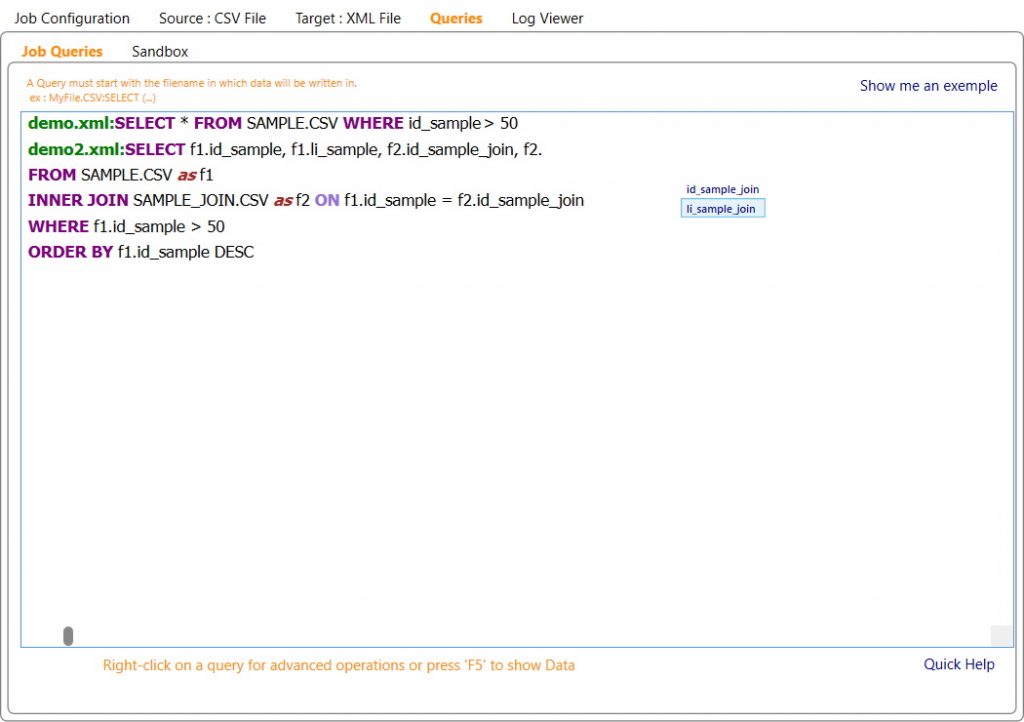
3. Webservice to File Query
The generic Fuzible SQL (fully SQL-92 compatible) syntax applies.
You’re not dealing with SQL tables but URL’s (the root is defined in the configured connection). You can also add some body content (see the 3rd query, inside brackets : a JSON string) and HTTP parameters (the 3 last queries).
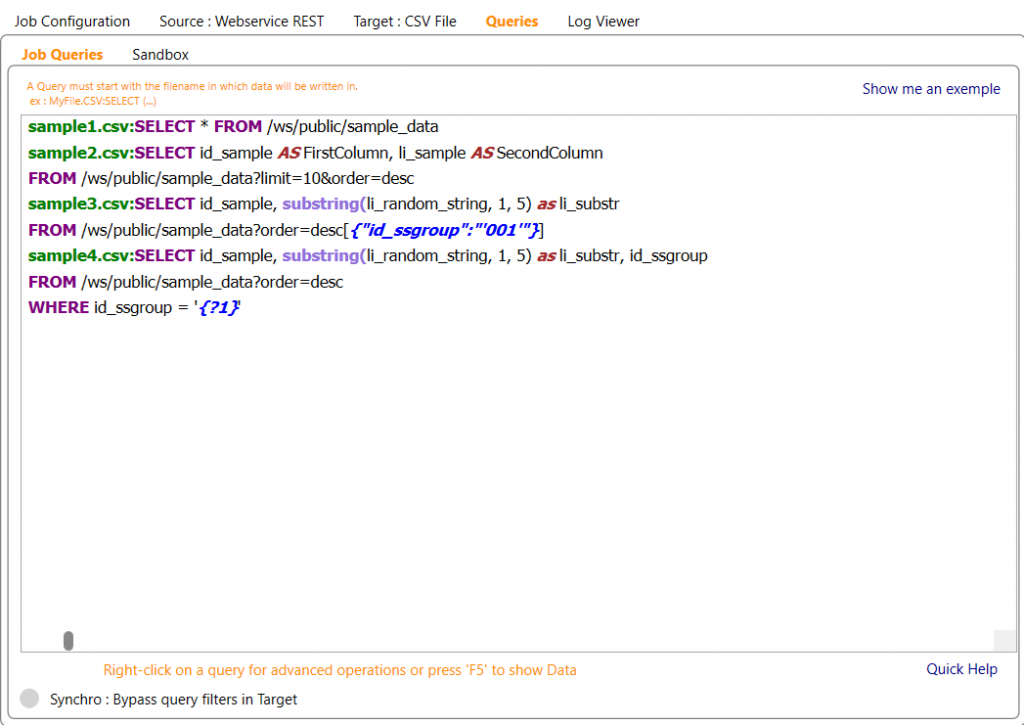
The SQL interpreter is able to read http parameters and a body (JSON, XML, raw content)
3.1 API’s using proprietary simili-SQL Language
There are some API that relies on their own proprietary simili-SQL language. We added the ability to use those languages instead of Fuzible SQL, that ca be very handy ! Let’s take an example with Salesforce SOQL :
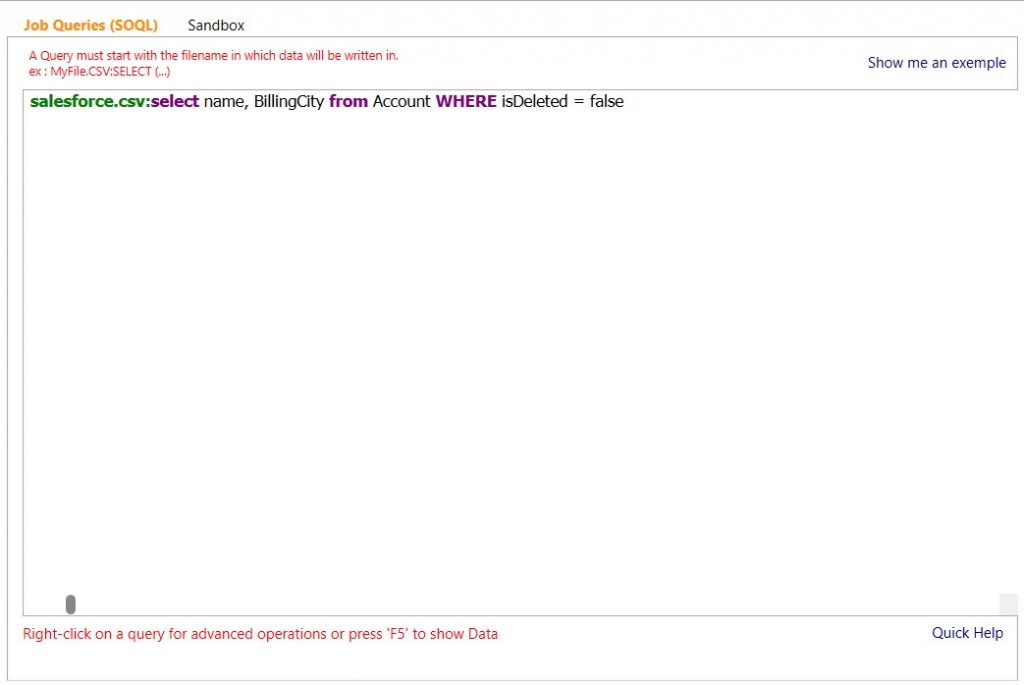
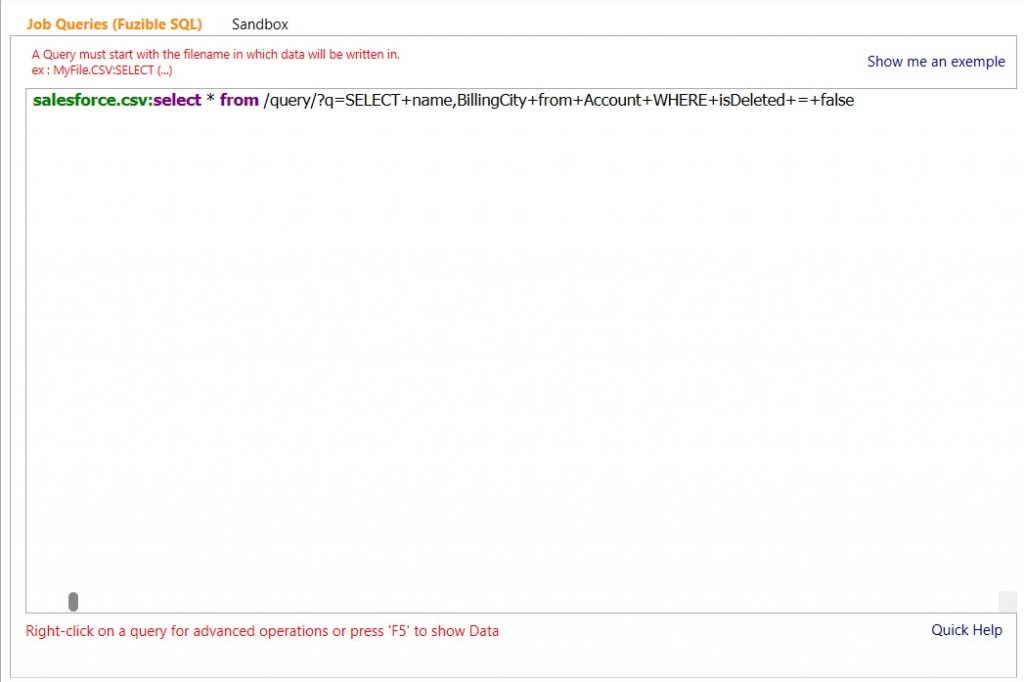
4. Mail to File Query
The generic Fuzible SQL (fully SQL-92 compatible) syntax applies.
You’re not dealing with SQL tables but mail addresses. The mailbox password is placed just after the mail address, between the brackets.
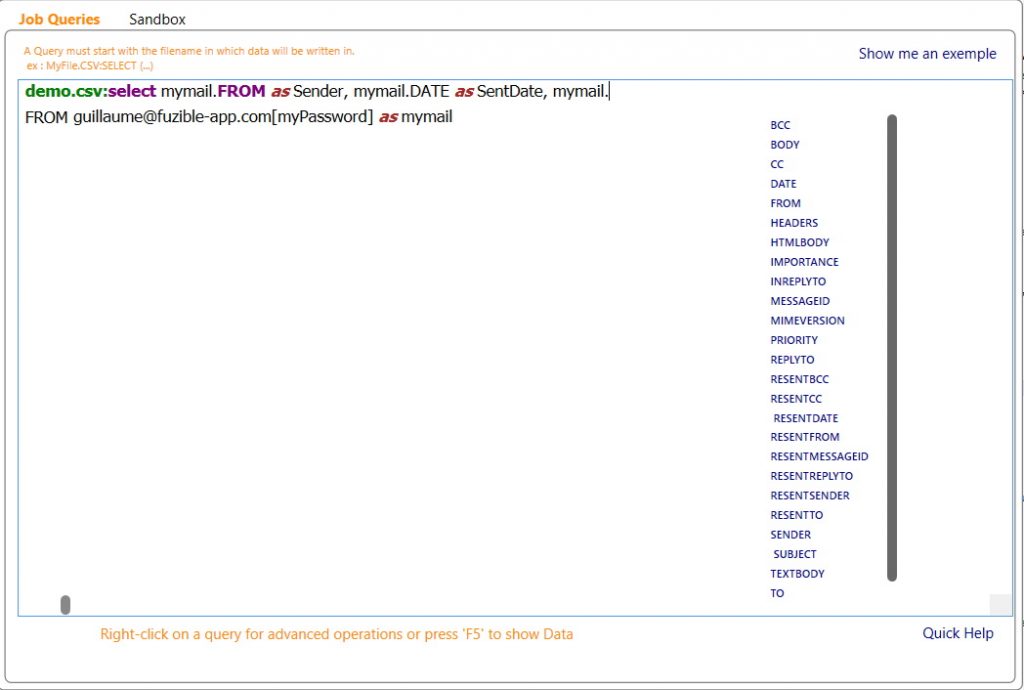
The query assistant shows you all the fields you can query from a mailbox.
5. Active Directory to File Query
The generic Fuzible SQL (fully SQL-92 compatible) syntax applies.
You’re not dealing with SQL tables but Groups and Users objects.
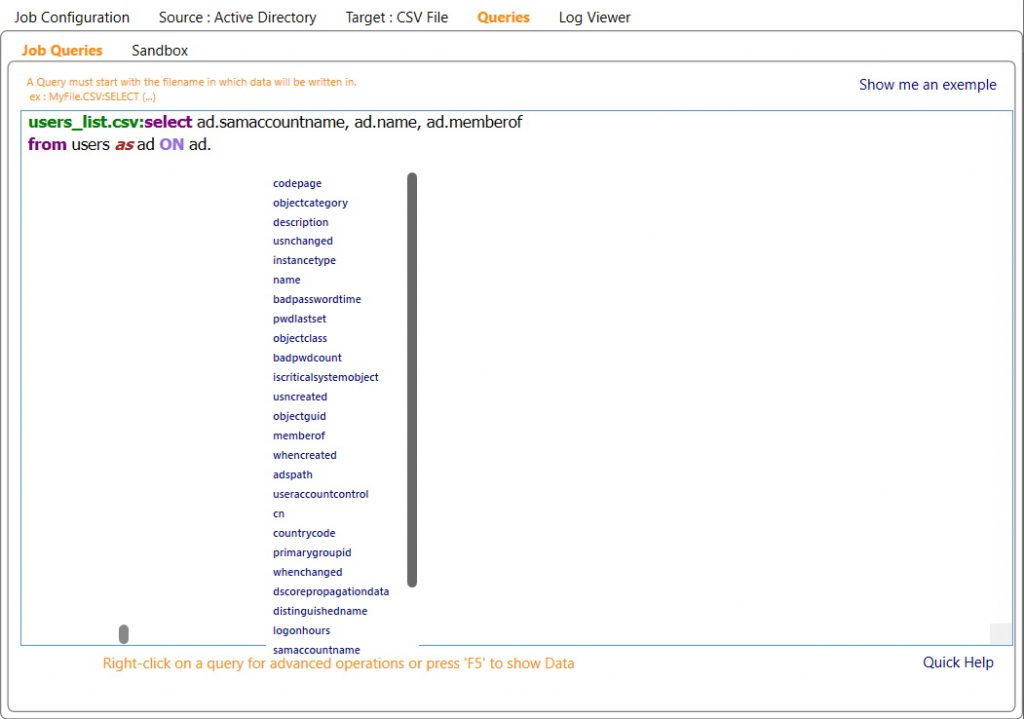
The query assistant shows you all the fields you can query from an Active Directory Domain.
6. MongoDB to File Query
The generic Fuzible SQL (fully SQL-92 compatible) syntax applies.
You’re not dealing with SQL tables but BSON collections. Fuzible includes an internal JSON/BSON parser : it can create multi-relational datasets and because you may retrieve multiple datasets, you are able to choose the one you want to work with with a very simple SQL syntax.
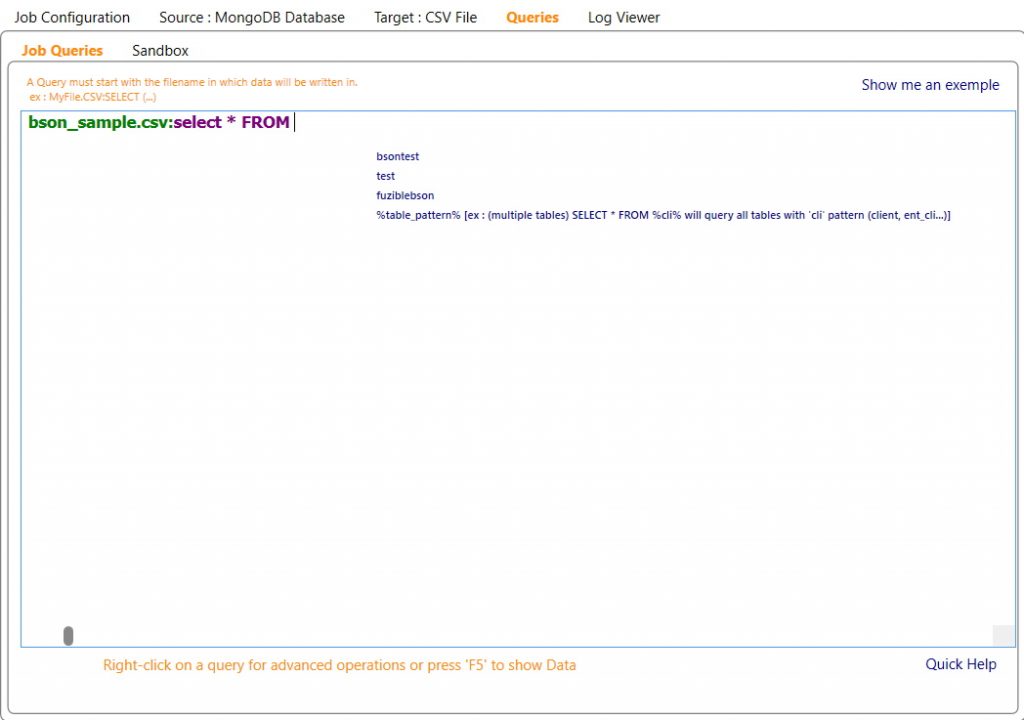
The query assistant shows you all the fields and collections you can query from a MongoDB database
Check out the Transformation Functions page for additional information
